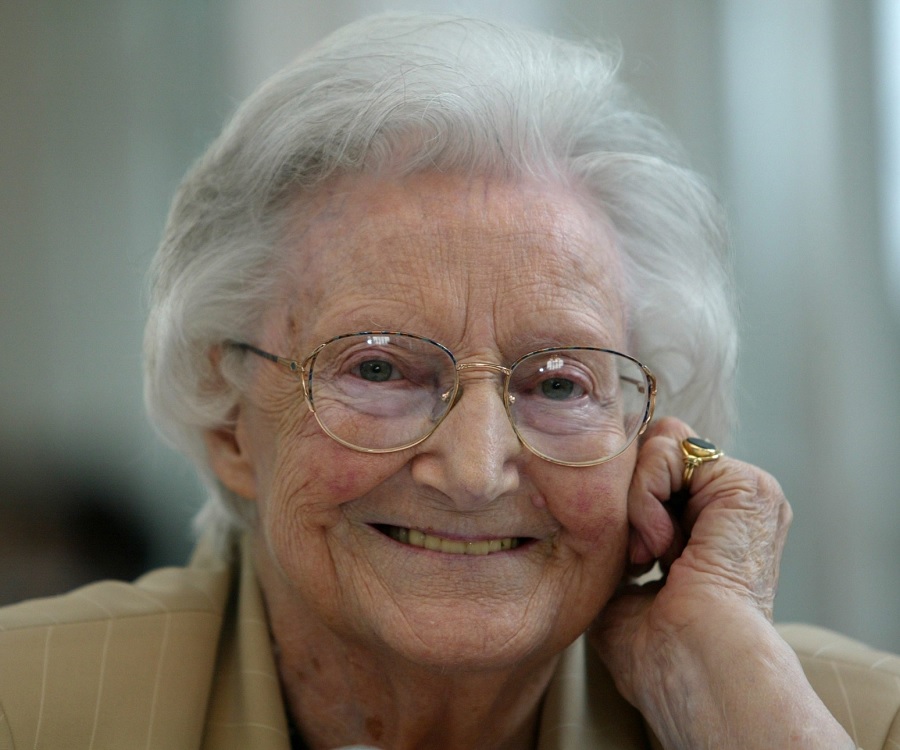
Cicely Saunders pod koniec życia
Dawid Taśma był Polakiem wyznającym religię judaistyczną. Do niedawna było modne żeby nazywać takich Polaków Żydami, ale tak naprawdę są to Polacy wyznania mojżeszowego, tak samo jak Polakami są wyznawcy prawosławia, albo islamu spod Przemyśla, Białej Podlaskiej, Białegostoku czy Wrocławia, albo Szczecina. W najgorszym razie są to obywatele Polski, którzy z jakichś powodów utracili zdolność utożsamiania się z Polską i jej wielonarodową tradycją oraz dziejami. Czasami może się zdarzyć, że ktoś taki zdradzi Polskę – jej rację stanu, ale czyż nie tysiąc razy więcej było w Polsce katolików-zdrajców?! Mógłbym wymienić kilku królów Polski, którzy okazali się zdrajcami Najjaśniejszej Rzeczpospolitej będąc wyjątkowo pobożnymi katolikami. Ale nie o tym jest ta opowieść. Bohaterem tej opowieści jest KOBIETA, Angielka, którą powinniśmy byli jako Polacy uczcić i uczynić honorową Polką. Tak się nie stało. Jest więcej takich Angielek i Anglików, więc mamy szansę na poprawę. Osoba niesamowita i wspaniała, która zakochała się kolejno w trzech Polakach i pokochała Polskę – Cicely Saunders.
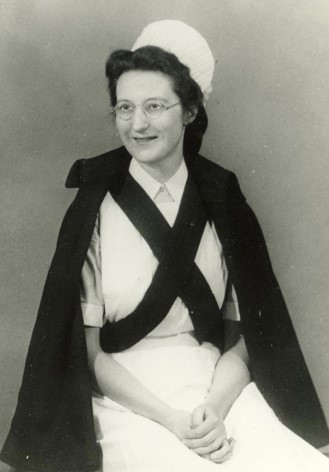
W czasie wojny gdy była pielęgniarką w St. Thomas Hospital (1944)
To co przeczytacie o dziwnych przypadkach jej życia w polskiej Wikipedii to dziwaczna lakoniczna notatka, która kompletnie nie oddaje niesamowitości i nadzwyczajności sytuacji życiowej tej Angielki. To jej uczucie do Polskiego Żyda Dawida Taśmy spowodowało, że dzisiaj na całym świecie mamy hospicja. Do II wojny światowej taka instytucja jak hospicjum, opiekująca się osobami umierającymi i tworząca dla nich warunki „domowe”, była światu nieznana. Idea narodziła się w Londynie, kiedy w szpitalu gdzie Cicely Saunders była pielęgniarką umierał na raka ów Polak – Dawid Taśma z Warszawy, w którym dziewczyna się zakochała. Platoniczna miłość trwała kilka tygodni, do jego śmierci w 1948 roku. W tym czasie oboje wpadli na pomysł realizacji idei domów opieki dla śmiertelnie chorych, a miłosnym ostatnim przyrzeczeniem dziewczyny w stosunku do ukochanego było, że doprowadzi ona ich projekt do realizacji. Słowa dotrzymała z nawiązką, ukończyła studia medyczne, założyła w Londynie hospicjum Św. Krzysztofa i stała się wielką działaczką ruchu hospicyjnego. Odznaczono ją wysokimi brytyjskimi orderami, nadano też tytuł szlachecki.
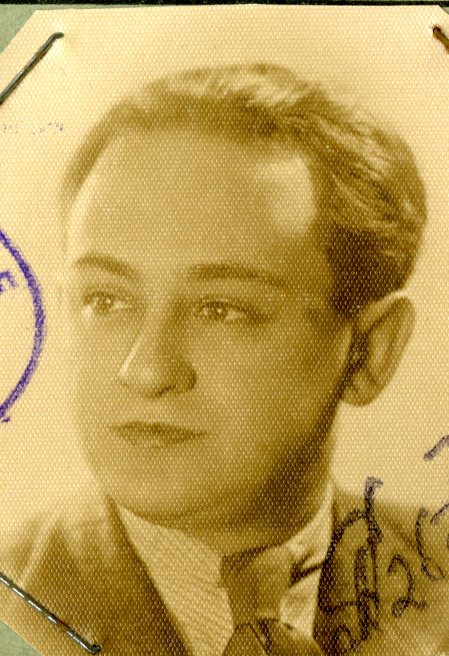
Zdjęcie Dawida Taśmy, fundatora pierwszego w dziejach hospicjum, podobnie jak poprzednie pochodzi ze strony: https://cicelysaundersarchive.wordpress.com/ . Gdyby nie ta strona to nie wiedzielibyście jak wyglądał człowiek, dzięki któremu mamy dzisiaj hospicja. W Polsce jest to postać kompletnie zapomniana, najwyraźniej niegodna uwagi.
Z polskiej Wikipedii oczywiście nie dowiecie się tego wszystkiego. Nie sądzę też, żeby w Polsce było choć jedno hospicjum imienia Cicely Saunders lub Dawida Taśmy. Cóż Taśma to może za mało polskie nazwisko, a Polak wyznania mojżeszowego być może w Polsce nie zasługuje na uczczenie?
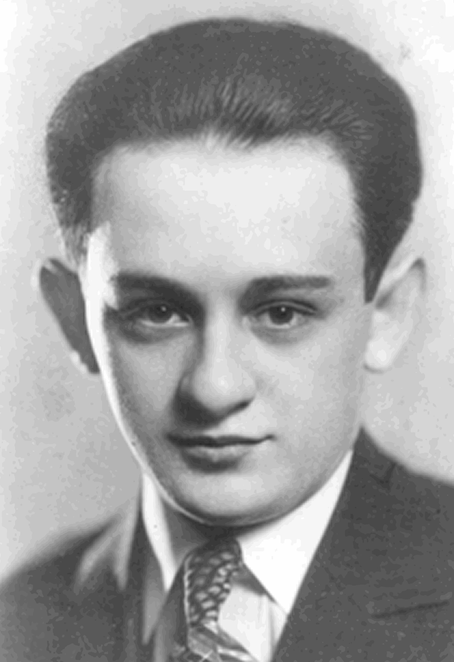
Po kilkunastu latach od śmierci ukochanego Cicely Saunders zakochała się w kolejnym umierającym Polaku. Było to w roku 1960 a nazywał się Antoni Michniewicz. Ale i tego mało, jak na jedno dziwne życie. W 1963 roku związała się na stałe z kolejnym Polakiem – Marianem Szyszko Bohuszem, malarzem i publicystą. Przez lata nie brali ślubu ponieważ Marian Szyszko Bohusz zostawił w Polsce żonę, a do komunistycznego kraju nie zamierzał wracać. Wyszła za niego za mąż dopiero w pięc lat po śmierci jego żony, kiedy miała już 61 lat. Było to bardzo szczęśliwe małżeństwo, które trwało kilkanaście lat.
Marian Szyszko Bohusz i Adolf Szyszko Bohusz, którego słynną willę podziwiamy do dzisiaj na skale bielańskiej w Krakowie to dwie różne osoby. Willa ukradziona wraz z całą posesją przez Hansa Franka na rezydencję Namiestnika Polski należała do profesora Adolfa Szyszko Bohusza – architekta, który był twórcą koncepcji Alei Trzech Wieszczów, a także projektantem dzielnicy willowej oplatającej Błonia Krakowskie. 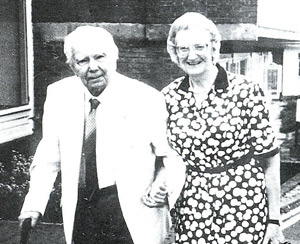
Cicely Saunders z mężem, Marianem Szyszko Bohuszem, pod koniec jego życia
Marian Szyszko Bohusz nigdy nie wrócił do Polski, zmarł na raka w 1995 roku w Hospicjum św. Krzysztofa Cicely Saunders, a jego żona umarła na raka 10 lat później, po długiej chorobie także w Hospicjum św. Krzysztofa.
To wszystko jest naprawdę niesamowite!
Przytaczam artykuł z angielskiej Wikipedii, w polskiej sami znajdziecie. Polskiego artykułu nie warto tutaj cytować.
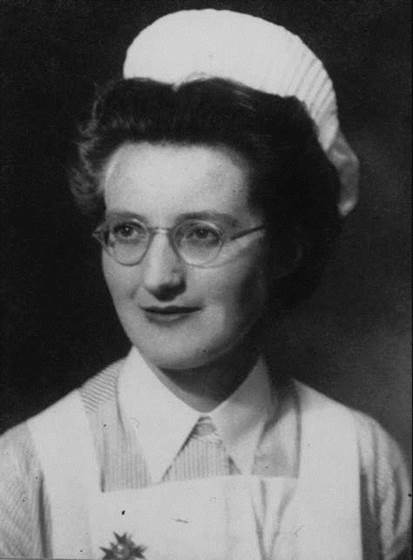
https://cicelysaundersarchive.wordpress.com/
Dame Cicely Mary Saunders OM DBE FRCS FRCP FRCN (22 June 1918 – 14 July 2005) was an English Anglican nurse, social worker, physician and writer, involved with many international universities. She is best known for her role in the birth of the hospice movement, emphasising the importance of palliative care in modern medicine.
College years
Saunders originally set out in 1938 to study politics, philosophy, and economics at St Anne’s College, Oxford. In 1940, she set out to become a nurse and trained at Nightingale School of Nursing based at St Thomas’s Hospital from 1940-44.[1] Returning to St Anne’s College after a back injury in 1944, she took a BA in 1945, qualifying as a medical social worker in 1947 and eventually trained as a doctor at St Thomas’s Hospital Medical School (now merged to form King’s College London GKT School of Medical Education) and qualified MBBS in 1957.[1]
Relationships
In 1948 she fell in love with a patient, David Tasma, a Polish-Jewish refugee who, having escaped from the Warsaw ghetto, worked as a waiter; he was dying of cancer. He bequeathed her £500 (equivalent to £13,106 in 2013)[2] to be „a window in your home”. [1] This donation, which helped germinate the idea which would become St Christopher’s, is memorialized with a plain sheet of glass at the hospice’s entrance. While training for social work, she holidayed with some Christians, and was converted to Christianity. In the late 1940s, Saunders began working part-time at St Luke’s Home for the Dying Poor in Bayswater, and it was partly this which, in 1951, led her to begin study to become a physician.
Hospice
A year later, she began working at St Joseph’s Hospice, a Catholic establishment, in Hackney, East London, where she would remain for seven years, researching pain control. There she met a second Pole, Antoni Michniewicz, a patient with whom she fell in love. His death, in 1960, coincided with the death of Saunders’s father, and another friend, and put her into what she later called a state of „pathological grieving”. But she had already decided to set up her own hospice, serving cancer patients, and said that Michniewicz’s death had shown her that „as the body becomes weaker, so the spirit becomes stronger”.[citation needed]
Saunders claimed that after 11 years of thinking about the project, she had drawn up a comprehensive plan and sought finance after reading Psalm 37: „Commit thy way unto the Lord; trust also in him; and he shall bring it to pass.” She succeeded in engaging the support of Albertine Winner, the deputy chief medical officer at the Ministry of Health at the time. Later, Dame Albertine Winner served as Chairwoman of St. Christopher’s. In 1965, Cicely Saunders was appointed Officer of the Order of the British Empire.
In 1967, St Christopher’s Hospice, the world’s first purpose-built hospice, was established. The hospice was founded on the principles of combining teaching and clinical research, expert pain and symptom relief with holistic care to meet the physical, social, psychological and spiritual needs of its patients and those of their family and friends. It was a place where patients could garden, write, talk – and get their hair done. There was always, Saunders would emphasize, so much more to be done, and she worked in this spirit as its medical director from 1967, and then, from 1985, as its chairperson, a post she occupied until 2000, when she became president.
In 1977 Cicely Saunders was awarded an honorary Lambeth doctorate by the Archbishop of Canterbury. In 1979, Queen Elizabeth II honoured Cicely Saunders with the title Dame Commander of the Order of the British Empire (DBE). In 1981 Dame Cicely was awarded the Templeton Prize, the world’s richest annual prize awarded to an individual. In 1989, she was appointed to the Order of Merit by Queen Elizabeth II. In 2001 she received the world’s largest humanitarian award – the Conrad N. Hilton Humanitarian Prize, worth £700,000 – on behalf of St Christopher’s.
On 25 April 2005, another portrait of Saunders was unveiled at the National Portrait Gallery. Dame Cicely was one of the subjects of Prime Minister Gordon Brown’s book: Courage: Eight Portraits.[3] She was a Fellow of the Royal College of Physicians, a Fellow of the Royal College of Nursing and a Fellow of the Royal College of Surgeons.
St Christopher’s includes an Arts Team that provides Art Therapy, Music Therapy, Drama Therapy and Community Arts. The work of the Arts Team is reflected in two publications: End of Life Care: A Guide for Therapists, Artists and Arts Therapists and The Creative Arts in Palliative Care.[4][5]
Marriage
In 1963, three years after the death of Michniewicz, Saunders became familiar with the paintings of Marian Bohusz-Szyszko, a Polish émigré and professor with a degree in fine art. They met and became friends, and she became a patron of his art. A substantial amount of his work is hung at St Christopher’s Hospice. Bohusz-Szyszko had a long-estranged wife in Poland, whom he supported, and was a devout Roman Catholic. In 1980, five years after the death of his wife, he married Saunders. She was 61 and he was 79. Bohusz-Szyszko died in 1995, at the age of 94, spending his last days at St Christopher’s Hospice. [6]
Charitable organisation
In 2002, Saunders co-founded a new charitable organisation, Cicely Saunders International. She was the founding trustee and president. The charity’s mission is to promote research to improve the care and treatment of all patients with progressive illness and to make high-quality palliative care available to everyone who needs it – hospice, hospital or home. The charity has co-created the world’s first purpose built institute of palliative care – the Cicely Saunders Institute, and supported research to improve the management of symptoms such as breathlessness, action to meet more closely patient and family choice in palliative care and better support for older people.
Medical ethics
Saunders was instrumental in the history of UK medical ethics. She was an advisor to Andrew Mephem whose report led the Rev. Edward Shotter to set up the London Medical Group, a forerunner of the Society for the Study of Medical Ethics, later the Institute of Medical Ethics. She gave one of the first LMG lectures on the subject of pain, developing the talk into „The Nature and Management of Terminal pain” by 1972.[7]
This went on to be one of the most often repeated and requested lectures of the LMG and other such Medical Groups that sprung up around Great Britain, where it was often given as their inaugural lecture.[7] Her talk on the care of the dying patient was printed by the LMG in its series 'Documentation in Medical Ethics, a forerunner of the Journal of Medical Ethics.[8]
Total pain
Saunders introduced the idea of „total pain”, which included physical, emotional, social, and spiritual distress.[9][10][11][12][13][14]
Death
Saunders died of cancer at age 87 in 2005, at St. Christopher’s Hospice, the hospice she had founded.[citation needed]
Titles and honours
Titles
- Miss Cicely Saunders (22 June 1928 – 1957)
- Dr Cicely Saunders (1957 – 1 January 1965)
- Dr Cicely Saunders, OBE (1 January 1965 – 31 December 1979)
- Dame Cicely Saunders, DBE (31 December 1979 – 30 November 1989)
- Dame Cicely Saunders, OM, DBE (30 November 1989 – 14 July 2005)
Honours
- Dame Commander of the Order of the British Empire (elevated from OBE)
- Member of the Order of Merit
References
- „St Christopher’s – Dame Cicely Saunders – St Christopher’s”. St Christopher’s.
- „UK Inflation calculator”. Retrieved 25 April 2013.
- Brown, Gordon (2007), „Cicely Saunders”, Courage: Eight portraits, London: Bloomsbury Publishing Plc, ISBN 978 0747565321
- „End of Life Care”.
- „The Creative Arts in Palliative Care”.
- „Dame Cicely Saunders, founder of the modern hospice movement, dies”. 25 December 2016. Retrieved 17 January 2017.
- Reynolds, L.A., and E.M. Tansey, eds. Medical Ethics Education in Britain, 1963–1993. London: UK: Wellcome Trust Centre for the History of Medicine at UCL (2007), pp. 8, 77, 118.]
- Saunders, Cicely. The Care of the Dying Patient and His Family; documentation in Medical Ethics, no. 5 (1975), published by the London Medical Group.
- Richmond, Caroline (23 July 2005). „Dame Cicely Saunders”. BMJ. 331 (7510): 238. doi:10.1136/bmj.331.7510.238. PMC 1179787
 .
. - „Elsevier”. Journal of Pain and Symptom Management. 29: 2–13. doi:10.1016/j.jpainsymman.2004.08.008. Retrieved 2013-09-15.
- Saunders, C (25 March 2013). „The evolution of palliative care”. J R Soc Med. 94: 430–2. PMC 1282179
 . PMID 11535742.
. PMID 11535742. - Clark, D (2000). „Total pain: the work of Cicely Saunders and the hospice movement”. American Pain Society Bulletin. 10 (4): 13–15.
- Article at nursingcenter.com
- „A holistic approach to pain”. Nursing Times.
External links
- A personal therapeutic journey, Cicely Saunders British Medical Journal 1996
- Cicely Saunders International
- BBC Woman’s Hour interview and history, broadcast 17 August 2001
- Works by or about Cicely Saunders in libraries (WorldCat catalog)
- posts about Cicely Saunders on the Glasgow End of Life Studies blog
- audio relating to Cicely Saunders on SoundCloud
- Appearance on Desert Island Discs 10 February 1995
